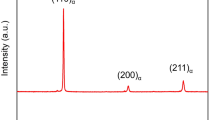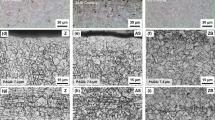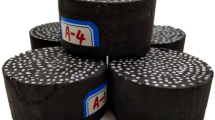Abstract
THE embrittlement of zirconium by hydrogen is generally reflected by a decrease in the energy absorbed in fracture in an impact test, with a notched or unnotched specimen. Only in certain circumstances is a simultaneous reduction in ductility observed in a tensile test, and therefore the embrittlement has generally been considered attributable to high strain rates. However, some recent work we have carried out indicates that it is the actual mode of stressing—by bending—rather than the strain rate which promotes brittle fracture of hydrided zirconium in an impact test. Afterwards, slow-bend tests, both notched and unnotched, have proved useful in elucidating several of the factors which contribute to brittle fracture of zirconium. The relative unimportance of strain rate has been demonstrated by the occurrence of a brittle crack in a notched slow-bend test in which the bending to promote fracture took 48 h.
This is a preview of subscription content, access via your institution
Access options
Subscribe to this journal
Receive 51 print issues and online access
$199.00 per year
only $3.90 per issue
Buy this article
- Purchase on Springer Link
- Instant access to full article PDF
Prices may be subject to local taxes which are calculated during checkout
Similar content being viewed by others
References
Fearnehough, G. D., and Hoy, C. J., J. Iron and Steel Inst., 202, 912 (1964).
Author information
Authors and Affiliations
Rights and permissions
About this article
Cite this article
COLEMAN, C., HARDIE, D. Slow-bend Testing of Hydrided Zirconium. Nature 208, 69–70 (1965). https://doi.org/10.1038/208069a0
Published:
Issue Date:
DOI: https://doi.org/10.1038/208069a0
This article is cited by
-
Instrumented Impact Testing of Zircaloy
Nature (1966)
Comments
By submitting a comment you agree to abide by our Terms and Community Guidelines. If you find something abusive or that does not comply with our terms or guidelines please flag it as inappropriate.



